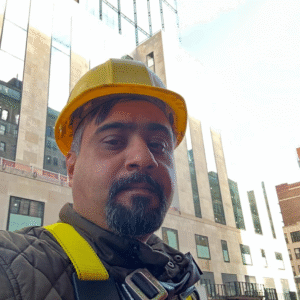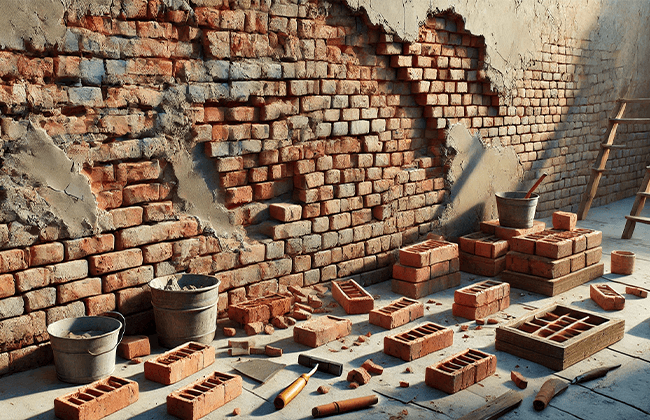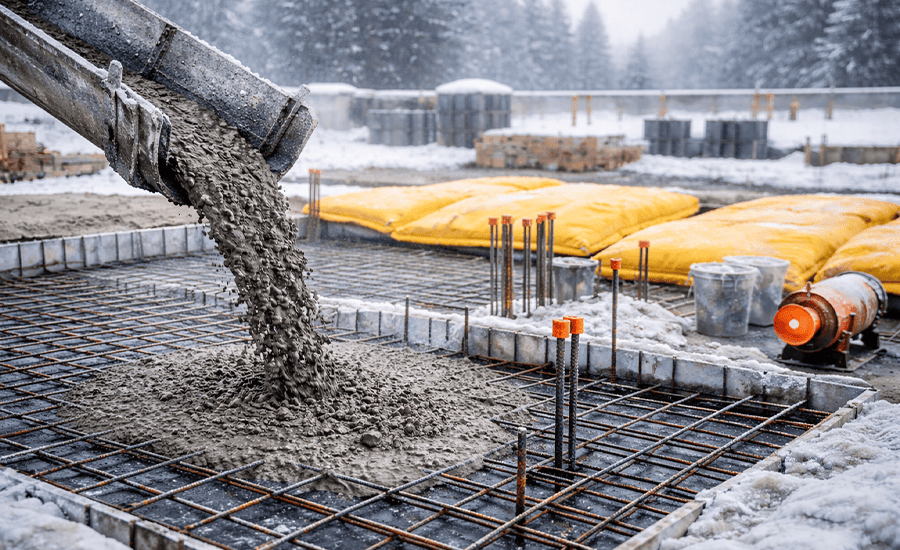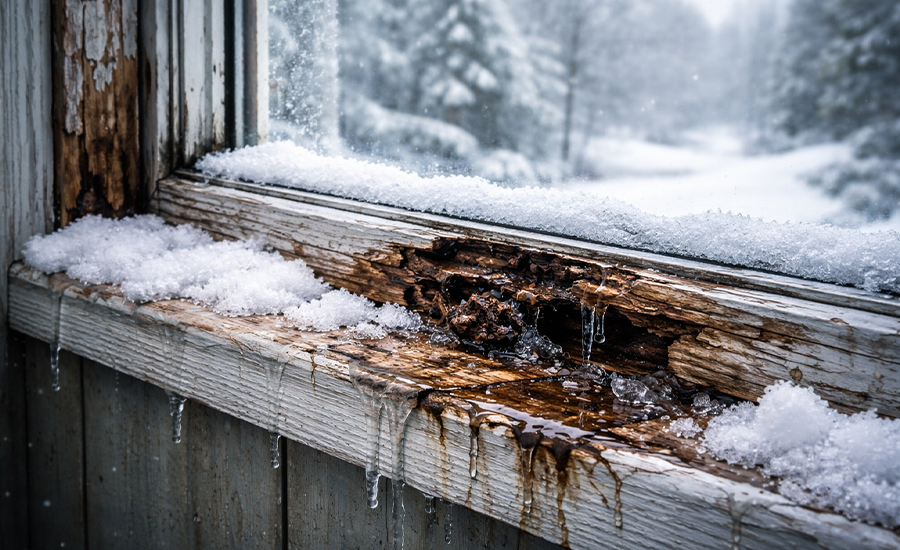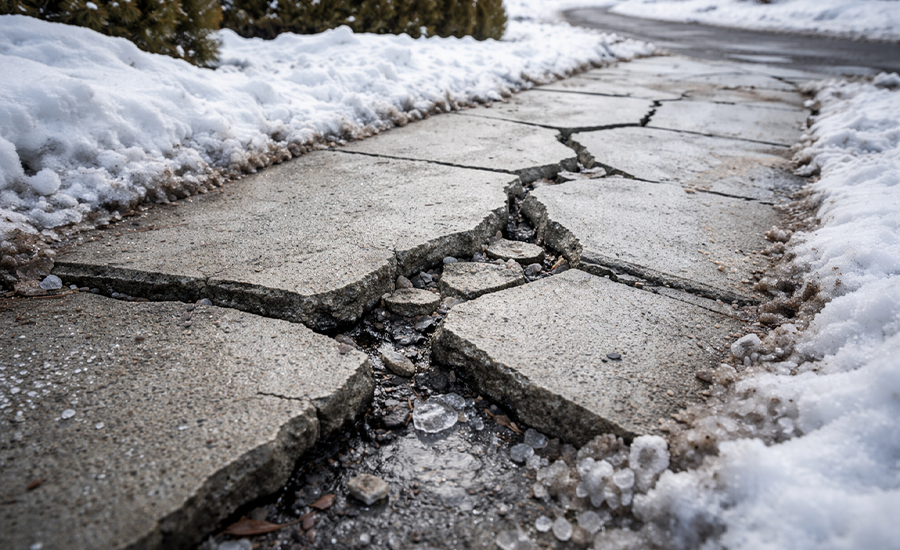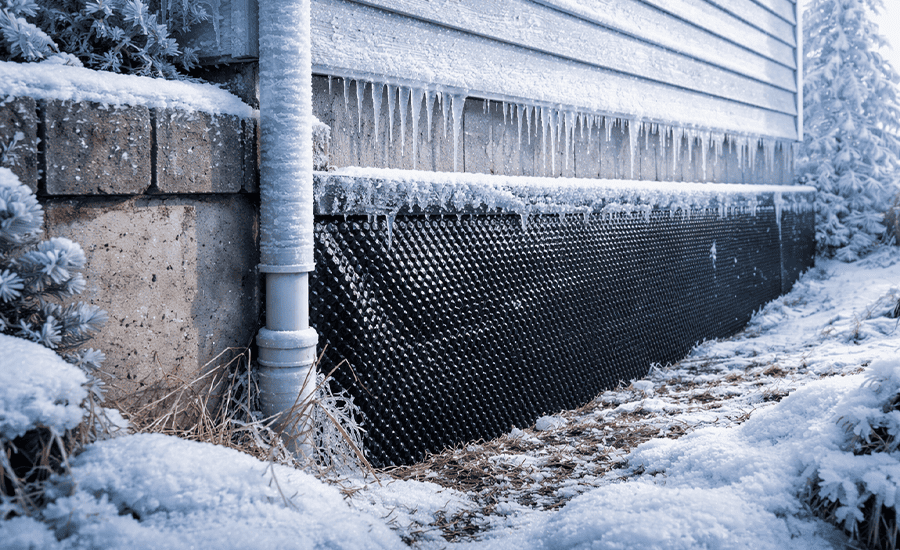Brick walls are renowned for their strength and aesthetic appeal, but even the most robust brickwork can develop issues over time. Structural movements, environmental factors, and wear and tear can cause cracks, gaps, or even moisture problems in your walls. Identifying these signs early on can help you avoid costly repairs in the future. In this article, we will delve into eight signs that your brick wall may need repair and explore solutions to address these issues effectively.
1. Cracked Bricks or Mortar Joints
Cracks in bricks or mortar joints are one of the most visible signs that your brick wall requires attention. Cracks can vary in size from tiny hairline fractures to significant gaps and should never be ignored.
What Causes Cracks?
- Structural settlement: As buildings age, they naturally settle into the ground, causing stress on the brick walls. This movement often leads to cracks in the bricks or mortar.
- Weather fluctuations: Bricks are susceptible to thermal expansion and contraction due to temperature changes, causing stress that leads to cracking.
- Moisture intrusion: When water seeps into the brickwork, it can cause the mortar to weaken and crack, especially in colder climates where water freezes and expands.
How to Fix It
For minor cracks, a process called repointing can be used. This involves removing the old mortar and replacing it with new mortar to restore the wall’s strength. For larger cracks, you may need to replace individual bricks or reinforce the wall to prevent further damage.
2. Bulging or Bowing Walls
If your brick wall appears to be bulging or bowing, it clearly indicates a structural issue. This is a severe problem, as it signals that the wall is no longer stable and could potentially collapse if not addressed.
What Causes Bulging Walls?
- Water damage: When moisture enters the wall, expanding water can push the bricks outward, especially during freezing weather.
- Foundation problems: Shifts in the foundation or poor foundation support can also cause the wall to bulge over time.
- Poor construction: Subpar masonry work during the original construction can lead to weakened structural integrity, causing bulging.
How to Fix It
Fixing a bulging wall typically requires rebuilding the affected section or adding reinforcement ties to pull the bricks back into place. In some cases, steel or helical wall anchors are installed to stabilize the wall and prevent further movement.

3. Mortar Deterioration
Mortar holds the bricks together, and the entire wall can weaken when it starts to deteriorate. Over time, mortar joints become soft, crumbly, or even eroded, leaving the wall susceptible to further damage.
What Causes Mortar Erosion?
- Weather exposure: Continuous exposure to rain, wind, and sun weakens the mortar.
- Poor-quality mortar: Using an incorrect mortar mix or improper application can speed up deterioration.
- Moisture: Water that seeps into mortar joints can cause the mortar to erode faster, especially in regions with frequent freeze-thaw cycles.
How to Fix It
Repointing is the most effective solution for deteriorated mortar. This involves scraping out the old, damaged mortar and applying new, durable mortar to fill the joints. This not only restores the wall’s strength but also improves its appearance.
4. Efflorescence (White Powdery Deposits)
Efflorescence appears as a white powdery substance on the surface of bricks. It is caused by moisture drawing soluble salts to the surface of the brickwork. While efflorescence may seem like a cosmetic issue, it indicates that moisture is present within the wall.
What Causes Efflorescence?
- Moisture penetration: Water inside the wall carries salts to the surface, where they crystallize as the water evaporates.
- Inadequate waterproofing: If the brickwork lacks proper sealing or waterproofing, efflorescence is more likely to develop.
How to Fix It
Efflorescence can be cleaned off using a stiff brush or a mild acid solution, but to prevent its return, the underlying moisture issue must be resolved. This typically involves sealing the brick wall with a water-repellent sealant and ensuring that proper drainage systems are in place around the building.
5. Spalling Bricks (Flaking or Breaking)
Spalling occurs when the outer surface of bricks begins to flake, chip, or break away. This is a sign that moisture has penetrated the brick, leading to deterioration, especially in climates with freezing temperatures.
What Causes Spalling?
- Freeze-thaw cycles: Water trapped inside the brick expands as it freezes, causing pieces of the brick to break off.
- Moisture damage: Constant exposure to water from rain or snow accelerates the spalling process.
How to Fix It
To fix spalling bricks, the damaged bricks must be removed and replaced with new ones. Additionally, a waterproof coating must be applied to prevent future moisture infiltration.

6. Damp Spots or Staining on Interior Walls
If you notice damp spots, water stains, or peeling paint on interior walls, it could be a sign that moisture is penetrating through cracks in your brick wall. Over time, this can lead to more serious issues like mould growth and damage to the building structure.
What Causes Damp Spots?
- Cracks in brick or mortar: Water enters through cracks in the wall, causing dampness inside.
- Poor drainage: Water pooling near the foundation or walls can seep into the brickwork and cause damp patches indoors.
How to Fix It
To fix this issue, you must first seal any cracks in the brick wall. Installing a moisture barrier and improving the building’s drainage system will help keep water away from the structure.
7. Gaps Between Bricks
Gaps between bricks indicate that the mortar has eroded or that the bricks have shifted over time. This is not only unsightly but also dangerous, as it weakens the overall structure of the wall.
What Causes Gaps?
- Mortar erosion: The mortar wears away over time, creating gaps between bricks.
- Foundation movement: If the foundation shifts, bricks can pull away from each other, leaving visible gaps.
How to Fix It
Gaps between bricks can be filled with new mortar through the process of repointing. If the foundation is the underlying issue, it may need to be stabilized before the wall can be fully repaired.
8. Brick Discoloration
Various factors, including water damage, mould, algae, or efflorescence, can cause brick discolouration. If your brick walls appear stained or discoloured, it’s a clear sign that something is wrong and should be addressed quickly.
What Causes Brick Discoloration?
- Water damage: Prolonged exposure to moisture can cause bricks to darken or stain.
- Mould and algae growth: In damp environments, mould and algae can grow on the surface of bricks, causing discolouration.
- Efflorescence: The appearance of white, powdery stains on the surface of bricks due to soluble salts.
How to Fix It
Clean the discoloured bricks with a soft brush, water, or mild detergent for tougher stains. If the discolouration is caused by moisture, address the underlying issue by sealing the wall and improving drainage.
Conclusion
Brick walls are known for their strength and long-lasting nature, but they do require maintenance and repairs over time. By recognizing signs such as cracked bricks, bulging walls, mortar erosion, and efflorescence, you can address potential issues before they escalate into more significant problems. Prompt repairs restore the structural integrity of your walls and enhance the overall appearance and lifespan of your building.
FAQs
How do I prevent cracks in my brick wall?
Regular maintenance, such as repointing and applying waterproof sealants, can prevent cracks from forming due to moisture and thermal stress.
What is the best way to fix mortar erosion?
The best solution is repointing, in which the old mortar is replaced with fresh mortar to restore the wall’s strength and appearance.
Can I fix spalling bricks myself?
Yes, you can remove and replace spalling bricks, but ensure you also address any moisture issues to prevent future spalling.
Why is my brick wall bulging?
Bulging is often caused by moisture inside the wall or foundation movement. Professional assessment and repairs are usually required.
What should I do if my interior walls show damp spots?
Seal the cracks in the brick wall, ensure proper drainage, and consider installing a moisture barrier to prevent further water infiltration.


